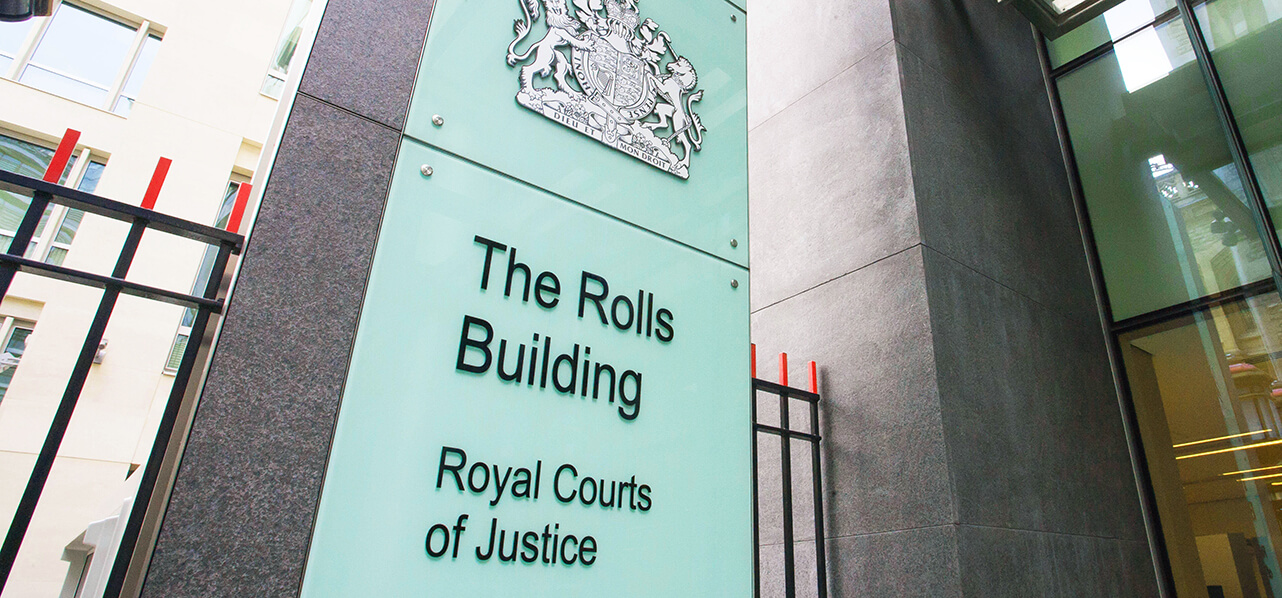Consultant Singapore
"Does the Nullity Exception deserve another look or is it time to close it down completely?"
What is a nullity?
A document which is signed by an impostor (as in Lambias (Importers and Exporters) Co Pte Ltd v HSBC (1993) 2 SLR 751) or issued and signed in the honest but mistaken belief that the issuer had authority to do so (as in Montrod Ltd v Grundkotter Fleischvertreibs GmbH (2002) 1 WLR 1975) is null.
But what of a certificate of origin which purports to state the goods were produced in one country when in fact they were produced in a different country? On its face, it would appear to be compliant but it must be a nullity as it conceals the true origin of the goods.
The case of a bill of lading (“BL”) may be more nuanced. Where a BL has been backdated, it will be regarded as a forgery but not a nullity since it is still evidence of the contract of carriage, a document of title and a receipt for the goods (Kwek Tek Chao v British Traders and Shippers Ltd (1954) QB 459). If the BL purports to evidence that goods have been shipped when they have not, it is both a forgery and null since it is not a document of title to nor a receipt for the goods (Hindley and Co Ltd v East Indian Produce Co ltd (1973) 2 LLR 515). If it has been signed by someone who does not have authority or is an impostor, it is both forged and a nullity.
Genesis
The Nullity Exception was considered but left open in United City Merchant (Investment)Ltd V Royal Bank of Canada (1983) 1 AC 168 regarding a BL that had been backdated by a broker with a different place of shipment inserted. The shipping line informed the bank that the shipment had been made late and outside the shipment date in the letter of credit (“LC”) and the bank refused to pay. Since the fraud was perpetrated by a third party without the beneficiary’s knowledge, the Fraud Exception did not apply. The UK House of Lords considered that a bank was bound to pay if the documents presented appeared to conform and since the beneficiary was unaware of the forgery, it held the bank must pay. No conclusion was reached on the Nullity Exception since it did not directly arise.
Rejection in Montrod
Twenty years later in Montrod Ltd v Grundkotter Fleischvertriebs GmbH (2002) 1WLR 1975, the issue of null documents came up again for consideration. In Montrod, the document in issue was a certificate of inspection to be signed by the applicant. In fact, the certificate had not been signed or authorised by the applicant but had been signed by the beneficiary in the honest belief it was so authorised. The Singapore Court of Appeal acknowledged it was an unusual situation but took the view that the bank must pay because the certificate was regular on its face and the beneficiary was not fraudulent as it honestly believed it had authority to issue it. The court considered there were sound policy reasons not to extend the law by creating a general Nullity Exception but reserved the position where the conduct of the beneficiary in presenting a document forged by a third party was such as not to deserve protection.
"The timing of when the bank acquires the knowledge that a document is null is crucial. That knowledge must be before payment."
Acknowledged in Beam
Shortly after Montrod, in Beam Technology (Mfg) Pte Ltd v Standard Chartered Bank (2002) SGCA 53 the bank sought a declaration that it was entitled to refuse to honour an LC on the ground that the air waybill (“AWB”) was a forgery having been issued by a non-existent entity. On its face, the AWB was regular and had been tendered by the seller in good faith. However, within the period for rejection of the presentation under the Uniform Customs & Practice for Documentary Credits (“UCP”), the bank became aware the issuer of the AWB was a non-existent company, issued a notice of rejection and returned the documents to the seller. Whilst the court upheld the principle that the bank is only obliged to verify that the documents conform with the credit, it held that if the bank was made aware that a document which is material is in fact forged and gave notice of rejection within the prescribed period under the UCP, it should not be obliged to pay.
Rather pithily, the court held it defied common sense to require that a bank which is aware a document is forged, even though the beneficiary was not privy to that forgery, must nevertheless pay.
The limited exception established is that a bank is not obliged to pay if it establishes, in the period for rejection under the UCP (now five days under UCP 600), that a ‘material’ document is forged and null and void and gives notice of that in the period. Whether a document is material or a nullity can only be answered on the facts of each case.
Position in Winson
The court confined themselves to making some observations on the exception but nevertheless some useful ones. In Winson, the documents presented included Letters of indemnity (“LOIs”) and invoices which were not forged but were based on BLs which were forged and cargoes which did not exist. In Beam, the seller presented a forged document to the bank (though unaware of it), whereas in Winson the documents presented were not forged. In Beam, the bank had given notice within the deadline for rejection but in Winson, the banks did not give any notice. The court referred to the concern in Montrod of establishing a broad Nullity Exception and the prospect it could undermine the system of documentary credits, but stated the limited exception in Beam may not give rise to concern though it would not be drawn on extending the exception to the facts in Winson.
What in the future?
The current limited exception hinges on several factors. First the document in question must be material. What is material? In Beam, the court held the AWB was material and distinguished the certificate of inspection in Montrod as being only relevant to quality and hence not material.
"Apart from Singapore, no other common law jurisdiction has recognised the Nullity Exception."
Second, the document must not only be null but also forged, though query why a null document but not forged should not also be within the exception. Third, the bank must become aware of the nullity before payment (not after-see Mees Pearson v Bay Pacific (S) Pte Ltd (2002) 4 SLR 393) and crucially make the decision to accept or reject the documents before the time prescribed in the UCP.
There are some policy issues involved in framing a Nullity Exception. Deciding whether a document is material is going to be problematic so long as it remains a test. A transport document will likely be material (as the AWB was in Beam) but why not a certificate of quality if it is needed to show if the cargo is within rejection limits under the contract of sale. In deciding whether a complying presentation has been made, banks will examine all documents presented and expect all to comply. On that basis, in the context of LCs, it could be argued that any document which is a nullity should be rejected whether material or not.
Should a null but genuine document fall within the exception or must it always be forged as well? What if the document is forged but not null? These are policy decisions but based on current law, the limited exception under Singapore law applies only to documents which are both null and forged and not to those which are forged but not null (which is a going to be a very limited category-at the moment it is suggested for example a misdated BL). The dividing line seems to be where the function of the document is not impaired.
The timing of when the bank acquires the knowledge that a document is null is crucial. That knowledge must be before payment. As to how the bank acquires knowledge, that as Beam acknowledges, might come from whatever source. The burden of proving the document is a nullity is on the party asserting it. The bank has no obligation to investigate facts outside the document.
The main issue though is fairness to the beneficiary. However it is framed, the exception will result in a bank refusing payment to an innocent beneficiary. In some cases, the document which turns out to be null was forged by a third party or passed to the beneficiary by its seller in a chain of transactions. The problem is that the beneficiary must make a complying presentation and in that respect is a null but genuine document complying or is it necessary to go further and only reject forged documents. A null document circulating in trade is just as much a mischief.
One also wonders how artificial intelligence (“AI”) will impact on the hitherto somewhat manual document checking in detecting fraud and any nullities in the documents when taken in addition to the checks offered by the Trade Finance Registry in Singapore. However, so long as many documents presented are originally created on paper (even if digitalised after), there is always the scope for fraud. Many trade documents commonly encountered have remarkably few, if any, security features and are easily reproducible with different dates and names. Human ingenuity and AI represent the best combination to combat fraud and reduce the need to broaden the exceptions to LC autonomy.
Conclusion
Apart from Singapore, no other common law jurisdiction has recognised the Nullity Exception. The autonomy of LCs is paramount and aside from fraud known to or perpetrated by the beneficiary at the time of presentation, there is little appetite to extend the exceptions further. There is also the need to take account of settled law that the beneficiary does not owe a duty of care to the issuing bank (Montrod) and the impact of UCP duties which only require the bank to examine the documents on their face to ensure it is a complying presentation (Articles 5 and 14a).
20 years have passed since Beam and the Nullity Exception has not been adopted elsewhere. It seems likely that it is an outlier to the Fraud Exception which in contrast is widely recognised. Beam may well just be a footnote in history along with the Nullity Exception.
Related insights
Newsletter Commercial Disputes Weekly – Issue 267
Newsletter Commercial Disputes Weekly – Issue 266



